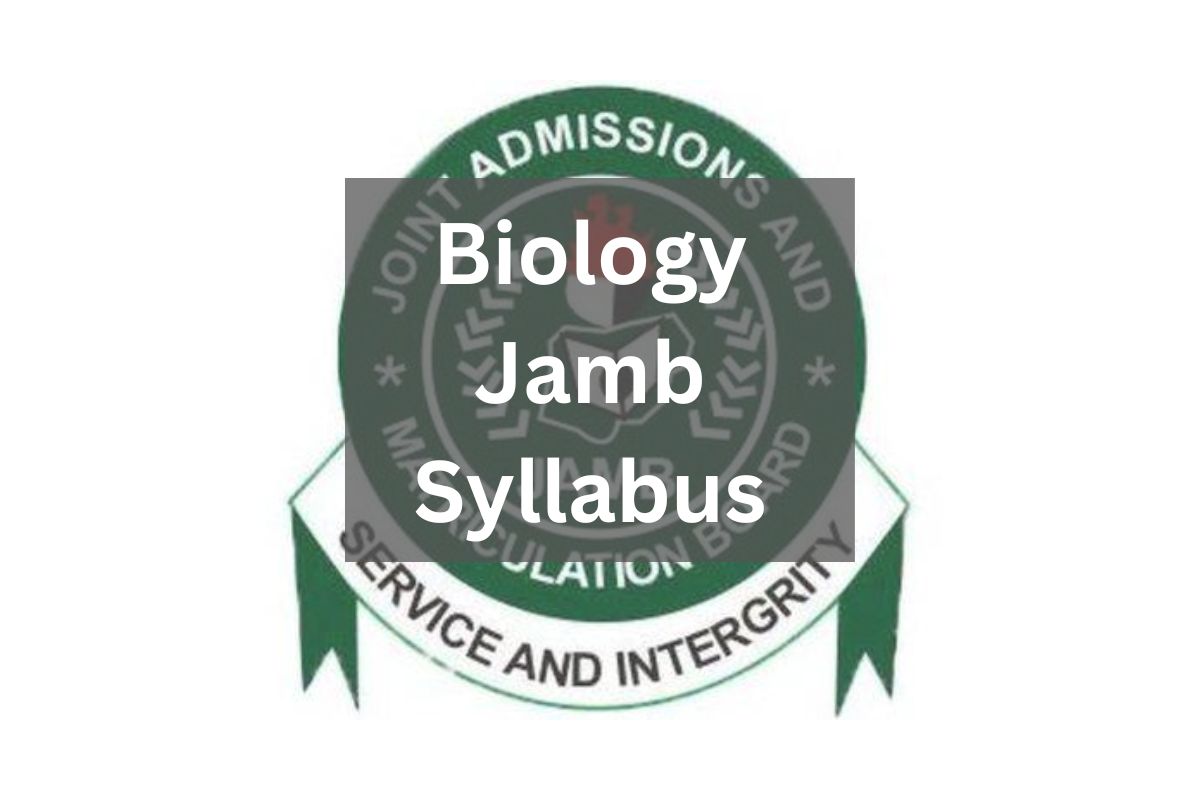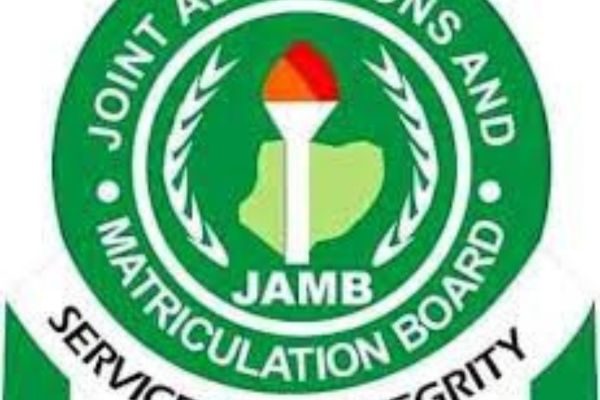Embarking on the journey to excel in Biology for the Joint Admissions and Matriculation Board (JAMB) examination? The Biology JAMB Syllabus is your comprehensive guide to mastering the essential topics. This syllabus meticulously outlines the key concepts, themes, and subtopics that students need to focus on for a thorough understanding of biological principles.
It serves as a roadmap for effective preparation, ensuring that candidates cover the breadth of the subject matter. In this introduction, we explore the significance of the Biology JAMB Syllabus as an indispensable tool to navigate and succeed in one of the vital components of the JAMB examination.
Overall Aims of JAMB Syllabus for Biology
The syllabus is crafted to assess the attainment of specific course objectives, including:
- Displaying a comprehensive understanding of the concepts related to the diversity, interdependence, and unity of life;
- Explaining the continuity of life through processes such as reorganization, inheritance, and evolution;
- Applying biological principles and concepts in practical scenarios, particularly in addressing issues impacting living organisms, individuals, society, the environment, community health, and the economy.
Download Biology Jamb Syllabus 2024/2025
List of Topics in JAMB Biology Syllabus
- Living Organisms
- Evolution
- Structural/functional and behavioral adaptations of organisms
- Internal structure of a flowering plant
- Nutrition
- Transport
- Respiration
- Excretion
- Support and movement
- Reproduction
- Growth
- Co-ordination and contro
- Factors affecting the distribution of Organisms
- Symbiotic interactions of plants and animals
- Natural Habitats
- Local (Nigerian Biomes)
- The Ecology of Populations
- Soil
- Humans and Environment
- Variation in Population
- Heredity
- Evolution
- Evidence of evolution
A complete breakdown of the JAMB Biology Syllabus
Living Organisms
- Characteristics of living organisms
- Cell structure and functions of cell Components
- Level of organization
- Cell e.g. euglena and paramecium,
- Tissue, e.g. epithelial tissues and hydra
- Organ, e.g. onion bulb
- Systems, e.g. reproductive, digestive, and excretory
- Organisms e.g. Chlamydomonas
Evolution
- Monera (prokaryotes), e.g. bacteria and blue-green algae.
- Protista (protozoans and protophyta),
e.g. Amoeba, Euglena and Paramecium - Fungi, e.g. mushrooms and Rhizopus.
- Plantae (plants) i. Thallophyta (e.g. Spirogyra), ii. Bryophyta (mosses and liverworts) e.g.
- Brachmenium and Merchantia, Pteridophyta (ferns) e.g. Dryopteris,
- Spermatophyta (Gymnospermae and Angiospermae) – Gymnosperms e.g.
- Cycads and conifers – Angiosperms (monocots, e.g. maize; dicots, e.g. water leaf)
- Animalia (animals) – Invertebrates, coelenterate (e.g. Hydra) – Platyhelminthes (flatworms) e.g. Taenia – Nematoda (roundworms) – Annelida (e.g. earthworm) –
- Arthropoda e.g. mosquito, cockroach, housefly, bee, butterfly – Mollusca (e.g. snails). ii. Multicellular animals (vertebrates) – pisces (cartilaginous and bony fish)
- – Amphibia (e.g. toads and frogs) – Reptilia (e.g. lizards, snakes and turtles) – Aves (birds) – Mammalia (mammals)
Structural/functional and behavioural adaptations of organisms
- adaptive colouration and its functions
- Behavioural adaptations in social animals
- Structural adaptations in organisms.
Internal structure of a flowering plant
- Root
- Stem
- Leaf
Nutrition - Modes of nutrition
- Autotrophic
- Heterotrophic
Types of Nutrition - Plant nutrition
- Photosynthesis
- Mineral requirements (macro and micro-nutrients)
Animal nutrition - Classes of food substances; carbohydrates, proteins, fats and oils, vitamins, mineral salts and
water - Food tests (e.g. starch, reducing sugar, protein, oil, fat etc.
- The mammalian tooth (structures, types and functions
- Mammalian alimentary canal
- Nutrition process (ingestion, digestion, absorption,
- assimilation of digested food.
Transport
a. Need for transportation
b. Materials for transportation.
Excretory products, gases, manufactured food, digested food, nutrient, water and hormones)
c. Channels for transportation
i. Mammalian circulatory system (heart, arteries,
veins, and capillaries)
ii Plant vascular system (phloem and xylem)
d. Media and processes of mechanism for transportation.
Respiration
a. Respiratory organs and surfaces
b. The mechanism of gaseous exchange in:
i. Plants
ii. Mammals
c. Aerobic respiration
d. Anaerobic respiration
Excretion
a. Types of excretory structures:
contractile vacuole, flame cell,
nephridium, Malpighian tubule, kidney,
stoma and lenticel.
b. Excretory mechanisms:
i. Kidneys
ii. lungs
ii. skin
c. Excretory products of plants
Support and movement
a. Tropic, tactic, nastic and sleep
movements in plants
b. supporting tissues in animals
c. Types and functions of the skeleton
i. Exoskeleton
ii. Endoskeleton
iii. Functions of the skeleton in animals
Reproduction
a. A sexual reproduction
i. Fission as in Paramecium
ii. Budding as in yeast
iii. Natural vegetative propagation
iv. Artificial vegetative propagation.
b. sexual reproduction in flowering plants
i. Floral parts and their functions
ii. Pollination and fertilization
iii. products of sexual reproduction
c. Reproduction in mammals
i. structures and functions of the male and female reproductive organs
ii. Fertilization and development.
(Fusion of gamates)
Growth
a. meaning of growth
b. Germination of seeds and condition
necessary for germination of seeds.
Co-ordination and contro
a. Nervous coordination:
i. the components, structure and functions
of the central nervous system;
ii. The components and functions of the
peripheral nervous systems;
iii. Mechanism of transmission of impulses;
iv. Reflex action
b. The sense organs
i. skin (tactile)
ii. nose (olfactory)
iii. tongue (taste)
iv. eye (sight)
v. ear (auditory)
c. Hormonal control
i. animal hormonal system
– Pituitary
– thyroid
– parathyroid
– adrenal gland
– pancreas
– gonads
ii. Plant hormones (phytohormones)
d. Homeostasis
i. Body temperature regulation
ii. Salt and water regulation
Factors affecting the distribution of Organisms
i. Abiotic
ii. Biotic
Symbiotic interactions of plants and animals
(a) Energy flow in the ecosystem: food chains, food webs and trophic levels
(b) Nutrient cycling in nature
i. carbon cycle
ii. water cycle
iii. Nitrogen cycle
Natural Habitats
(a) Aquatic (e.g. ponds, streams, lakes
seashores and mangrove swamps)
(b) Terrestrial/arboreal (e.g. tree-tops of oil palm, abandoned farmland or a dry grassy
(savanna) field, and burrow or hole.
Local (Nigerian Biomes)
a. Tropical rainforest
b. Guinea savanna (southern and northern)
c. Sudan Savanna
d. Desert
e. Highlands of montane forests and grasslands of the Obudu, Jos, Mambilla Plateau.
The Ecology of Populations
(a) Population density and overcrowding.
(b) Adaptation for survival
i. Factors that bring about competition
ii. Intra and inter-specific competition
iii. Relationship between competition and succession.
(c) Factors affecting population sizes:
i. Biotic (e.g. food, pest, disease, predation, competition, reproductive ability).
ii. Abiotic (e.g. temperature, space, light, rainfall, topography, pressure, pH, etc.
(d) Ecological succession
i. primary succession
ii. secondary succession
Soil
a) (i) characteristics of different types
of soil (sandy, loamy, clayey)
i. Soil structure
ii. porosity, capillarity, and hummus
content
iii. Components of the soil
i. inorganic
ii. organic
iii. soil organisms
iv. Soil air
v. Soil water
Soil fertility:
i. loss of soil fertility
ii. Renewal and maintenance of soil fertility
Humans and Environment
(a) Diseases:
(i) Common and endemic diseases.
ii. Easily transmissible diseases and disease syndrome such as:
– poliomyelitis
– cholera
– tuberculosis
– sexually transmitted disease/syndrome (gonorrhea, syphilis, AIDS, etc.
b. Pollution and its control
(i) sources, types, effects, and methods of control.
(ii) Sanitation and sewage
(c) Conservation of Natural Resources
(d) Game reserves and National parks
Variation in Population
a. Morphological variations in the physical appearance of individuals.
(i) size (height, weight)
(ii) Colour (skin, eye, hair, coat of animals, scales and feathers.
(iii) Fingerprints
b. Physiological variation
(i) Ability to roll tongue
(ii) Ability to taste
phenylthiocarbamide (PTC)
(iii) Blood groups
c. Application of discontinuous
variation in crime detection,
blood transfusion and
determination of paternity
Heredity
a) Inheritance of characters in organisms;
i) Heritable and non-heritable characters.
b) Chromosomes – the basis of heredity;
(i) Structure
(ii) Process of transmission of hereditary characters from parents to offspring.
c) Probability in genetics and sex determination.
a) Application of the principles of heredity in:
i) Agriculture
(ii) Medicine
b. Sex–linked characters e.g. baldness, haemophilia, colour blindness, etc.
Evolution
a) Lamarck’s theory
b) Darwin’s theory
c) organic theory
RECOMMENDED TEXTS
Ndu, F.O. C. Ndu, Abun A. and Aina J.O. (2001) Senior Secondary
School Biology: Books 1 -3, Lagos: Longman
Odunfa, S.A. (2001) Essential of Biology, Ibadan: Heinemann
Ogunniyi M.B. Adebisi A.A. and Okojie J.A. (2000) Biology for Senior Secondary
Schools: Books 1 – 3,
Macmillan Ramalingam, S.T. (2005) Modern Biology, SS Science Series. New Edition, AFP
Stan. (2004) Biology for Senior Secondary Schools. Revised Edition,
Ibadan: Heinemann Stone R.H. and Cozens, A.B.C. (1982) Biology for
West African Schools. Longman Usua, E.J. (1997) Handbook of
practical Biology 2nd Edition, University Press, Limited
In conclusion, the Biology JAMB Syllabus serves as a vital resource for candidates preparing for the Joint Admissions and Matriculation Board (JAMB) examination. Covering a comprehensive range of topics, the syllabus provides a clear roadmap for the study of biology, ensuring that candidates are well-equipped with the necessary knowledge and understanding. Aspirants are strongly encouraged to utilize the syllabus diligently to focus their preparation effectively. For easy access to the Biology JAMB Syllabus, the link below is provided, serving as a valuable tool in guiding candidates toward success in their examination.





